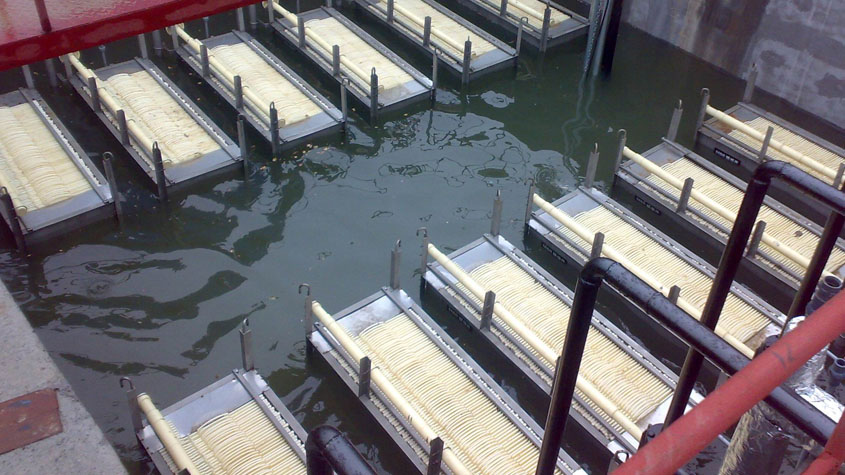
Water scarcity and the increasing demand for freshwater resources have highlighted the importance of water reuse as a sustainable solution. Submerged flat sheet membrane technology has emerged as a key enabler in improving water reuse practices. This article explores how submerged flat sheet membrane technology is revolutionizing water reuse, highlighting its benefits, applications, and contributions to achieving efficient and sustainable water management.
1. The Importance of Water Reuse:
Water scarcity, population growth, and environmental concerns have led to a greater emphasis on water reuse as a viable solution. Water reuse involves treating and repurposing wastewater, stormwater, or other non-potable water sources for various applications, reducing the strain on freshwater resources and promoting sustainable water management.
2. Introduction to Submerged Flat Sheet Membrane Technology:
Submerged flat sheet membrane technology is an advanced filtration process that utilizes flat sheet membranes with microscopic pores to separate impurities from water. In this technology, the membranes are immersed in the water to be treated, allowing for continuous filtration and high-quality treated water production. The small pore size of the membranes ensures the removal of suspended solids, bacteria, and even certain viruses, resulting in water suitable for reuse.
3. Benefits of Submerged Flat Sheet Membrane Technology for Water Reuse:
a) Superior Filtration Performance: Submerged flat sheet membrane technology offers exceptional filtration efficiency, effectively removing impurities and contaminants from water sources. The membranes’ small pore size ensures high-quality treated water, meeting stringent water quality standards for reuse applications.
b) Enhanced Water Recovery: Submerged flat sheet membrane technology enables a significant portion of treated water to be recovered, reducing the reliance on freshwater sources and conserving water resources.
c) Pathogen Removal: The advanced filtration capabilities of submerged flat sheet membrane technology effectively remove pathogens, including bacteria and viruses, from water sources, ensuring the safety of the reused water.
d) Chemical-Free Operation: Submerged flat sheet membrane technology minimizes the need for chemical additives in the treatment process, reducing the environmental impact and operational costs associated with chemical usage.
4. Applications of Submerged Flat Sheet Membrane Technology in Water Reuse:
a) Municipal Water Reuse: Submerged flat sheet membrane technology plays a crucial role in municipal water reuse projects, treating wastewater to produce high-quality water for non-potable applications such as irrigation, industrial processes, and groundwater recharge.
b) Industrial Water Reuse: Industries, including manufacturing, food and beverage, and pharmaceuticals, can benefit from submerged flat sheet membrane technology for water reuse. It enables the treatment of process wastewater for reuse in various industrial applications, reducing freshwater consumption and ensuring compliance with environmental regulations.
c) Agricultural Water Reuse: Submerged flat sheet membrane technology can be utilized in agricultural settings, treating agricultural runoff or stormwater for irrigation purposes. This ensures the availability of water for crop irrigation while reducing the demand for freshwater resources.
5. Contribution to Sustainable Water Management:
Submerged flat sheet membrane technology significantly contributes to sustainable water management by improving water reuse practices:
a) Water Conservation: By treating and reusing water, submerged flat sheet membrane technology reduces the demand for freshwater resources, addressing water scarcity issues and promoting efficient water management.
b) Environmental Protection: Submerged flat sheet membrane technology removes pollutants and contaminants from water sources, protecting ecosystems and safeguarding human health.
c) Energy Efficiency: The continuous filtration process of submerged flat sheet membrane technology minimizes energy consumption, reducing carbon emissions and promoting sustainable energy practices.
d) Circular Economy Approach: The recovery of valuable resources, such as nutrients or metals, from the concentrated sludge generated during membrane filtration, adds to the circularity of water treatment processes.
Conclusion:
Submerged flat sheet membrane technology has revolutionized water reuse practices by offering superior filtration performance, enhanced water recovery, and pathogen removal capabilities. Its applications in municipal, industrial, and agricultural water reuse projects contribute to sustainable water management by conserving water, protecting the environment, and reducing reliance on freshwater sources. By embracing submerged flat sheet membrane technology, industries and communities can achieve efficient and sustainable water reuse, ensuring the availability of clean and safe water for various non-potable applications. As water scarcity continues to be a global challenge, the role of submerged flat sheet membrane technology in improving water reuse will become increasingly crucial.
About Jiangsu Peier membrane
iangsu Peier membrane corp.,Ltd(Stock Code: 836744) was established in 2007 with a registered capital of 48 million Yuan, referred to as “Peier membrane industry”.
It is a high-tech enterprise focusing on the R&D, production, manufacturing and service of MBR flat sheet membrane products. Its Peier Product category as below:
- Flat Sheet Membrane Element
- Flat Sheet Membrane Element-Single Nozzle
- Flat Sheet Membrane Element-Double Nozzle
- Flat Sheet Membrane Element-3D Soft Support
- Flat Sheet Membrane Element-Renovated Membrane
- Flat Sheet Membrane Module
- Flat Sheet Membrane Module-Module-Single Nozzle
- Flat Sheet Membrane Module-Module-Double Nozzle
- Flat Sheet Membrane Module-2S(Double Deck)
- Flat Sheet Membrane Module-3S(High Flux)
- Flat Sheet Membrane Module-Mini Module
- MBR System
- MBR System-Laboratory Test Equipment
- MBR System-Pilot Equipment
- MBR System-Package System
Peier membrane always adheres to R&D and cooperation with well-known universities at home and abroad, such as Tsinghua University, Sydney University, Nanjing University of technology, Changzhou University and Jiangnan University.
It is the editor in chief of the national industry standard HY/T252-2018 “submerged flat membrane element for water treatment”.
At present, it has 7 invention patents, 56 new utility patents, 4 software works and 1 appearance patent.